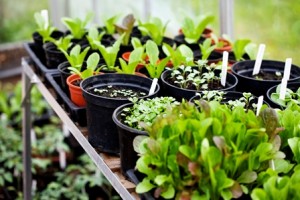It is time to sow some seeds. Although, I am still harvesting tomatoes, peppers, green beans, and eggplant from my garden, I can start planting my fall garden. The nighttime temperatures are dropping, which is what our cool season vegetables need. A fall garden allows me to continue feeding my family fresh, homegrown vegetables until winter arrives.

Two of my daughters love fresh salad, of course, doused in ranch dressing. In this year’s fall garden, we are going to add a bit of variety to our salad mix. Check out this short video, where our extension agent discusses the different types of lettuce varieties.
For more information on fall gardening, check out my blog post from last year.
https://nutrientsforlife.org/2011/09/tips-for-starting-a-fall-garden/





Do you remove plants that have stopped producing from their bed and replant the fall crop, or do you reserve space for this?
Great question. I have limited space so I am putting my fall veggies where my other veggies have stopped producing. This year, I am putting most of the fall veggies where I had grown green beans. Good luck with your Fall garden.
In my garden, I remove all of the plant debris and put it in the compost pile. Usually this occurs after a frost has killed my plants. I also have a layer of straw mulch. I leave that and work that into the soil….unless it has been used around a diseased plant. Any materials that have been touched by a diseased plant should be removed. Also do not add any diseased material to your compost pile.
When you are removing the plant material, you are taking the plant nutrients and organic matter with it. So it’s important to return the nutrients and organic matter to the soil by adding compost and fertilizers.
When you come to the end of the growing season, do you let everything die back and work it into the soil, or clear it out? (If you are not trying to re-plant for fall.)